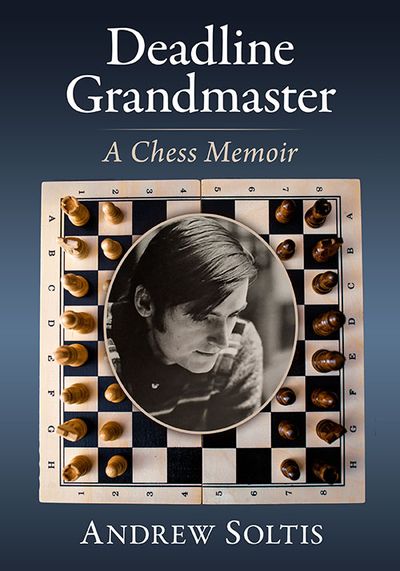Publisher: Thinkers Publishing, 2016, Pages: 245, Paperback
King’s Indian was and still is one of my favourite openings that I used for many years in my chess career. Many books were written on the subject but I wanted to attempt not to copy what existed, aiming at a more personal angle and presenting some authentic material that is not known or was never popular for the wrong reasons.
Many great players in the past played the King’s Indian and gave it a modern look, to name some: Fischer, Bronstein, Boleslavsky, Gligoric, Kasparov, Nunn are some famous names that popularized this opening. Nowadays Radjabov and Nakamura are known for using it regularly on the top level.
The pure understanding of the KI does not come easy. Nothing is of a forced nature and there are a lot of strategical goals that are needed to fully understand. ‘Dynamics' in closed positions are an ever returning key aspect, this is essential to understand for anyone who wants to play this opening properly.
In this book I tried to make it comfortable to the readers, enabling them to adapt fast to what I present. After all, if you want to play for a win with Black, lots of pieces on the board present an ultimate tool for your desired result! That is also the most difficult issue to realize when an opening of this kind should occur and when not: what are the strongest points of the position and which ones are less dramatic.
This book contains the most important lines against the most common White’s set-ups. While there are also some transpositions to the lines of the Benoni, for instance in the ‘Four Pawns Attack’ because I’m convinced that ‘…c5’ is then the best reaction. Also, for instance the line given against the ‘Fianchetto set-up’ is not completely independent, in a sense that it is a purely King’s Indian type of line the readers will receive, but it represents the important and unique aspect that can arise from different move orders, a kind of an universal line.
I think the lines should be called by the names of players responsible for their development, in case of the ‘Nf3-h3’ line I think it should be called the ‘Makagonov-line’, developed by the famous Russian theoretician.
The King’s Indian offers a variety of possibilities in terms of how the game can be conducted. What I mean is that the ‘…e5 and …c5’ reactions are possible and not only that but in the lines with ‘…e5’ I tried to focus when it was possible to combine that with ‘…exd4’ ideas, ideas that for some reasons remained a bit underrated in the past.
For me at least to make a combination of closed and semi-closed positions was an interesting choice. That's why I didn't want to write about the ‘…Na6, …Nc6 or …Nbd7’ lines where the centre could be closed at any move or moment. Presenting something different and new kind of material was my goal with this book. I hope you will enjoy the King’s Indian even more!
Contents
Key to Symbols used & Bibliography
Preface
PART I – The Sämisch variation
(1. d4 Nf6 2. c4 g6 3. Nc3 Bg7 4. e4 d6 5. f3 0-0)
Chapter 1 – 6. Bg5
Chapter 2 – 6. Be3 Nbd7!? 7. Bd3
Chapter 3 – 6. Be3 Nbd7!? 7. Qd2 c5
Chapter 4 – 6. Be3 Nbd7!? 7. Nh3 c6
Chapter 5 – 7. Nge2 c5 8. d5 Ne5 9. Ng3 h5 10. Be2 h4 11. Nf1 e6
PART II – Classical systems with h3
(1. d4 Nf6 2. c4 g6 3. Nc3 Bg7 4. e4 d6)
Chapter 6 – 5. h3 0-0 6. Be3 e5 7. d5 Na6
Chapter 7 – The Makagonov variation (5. Nf3 0-0 6. h3 e5 7. d5 Nh5)
PART III – Classical systems with Be2
(1. d4 Nf6 2. c4 g6 3. Nc3 Bg7 4. e4 d6)
Chapter 8 – Early aggressive ideas
Chapter 9 – The exchange variation (5. Nf3 0-0 6. Be2 e5 7. Dxe5)
Chapter 10 – The Petrosian variation (5. Nf3 0-0 6. Be2 e5 7. d5 Na6)
Chapter 11 – The Gligoric variation (5.Nf3 0-0 6.Be2 e5 7.Be3 exd4
8.Nxd4 Re8 9.f3 c6 10. Bf2 d5 11. exd5 cxd5 12. 0-0 Nc6 13. c5)
Chapter 12 – Main classical variation (5.Nf3 0-0 6.Be2 e5 7. 0-0 exd4
8. Nxd4 Re8 9. f3) with 9… c6 10. Kh1 Nbd7
Chapter 13 – Main classical variation (5.Nf3 0-0 6.Be2 e5 7. 0-0 exd4
8. Nxd4 Re8 9. f3) with 9… Nc6 10. Be3 Nh5
PART IV – Systems with Nge2
(1. d4 Nf6 2. c4 g6 3. Nc3 Bg7 4. e4 d6)
Chapter 14 – 5. Bd3 0-0 6. Nge2 Nbd7 7. 0-0 a6
Chapter 15 – 5. Nge2 0-0 6. Ng3 Nbd7 7. Be2 h5
PART V – The Averbakh variation
(1. d4 Nf6 2. c4 g6 3. Nc3 Bg7 4. e4 d6 5. Be2 0-0 6. Bg5 c5)
Chapter 16 – 7. dxc5
Chapter 17 – 7. d5 a6 8. Qd2 b5 9. cxb5 Qa5
Chapter 18 – 7. d5 a6 8. a4 h6
PART VI – The Four Pawns Attack
(1. d4 Nf6 2. c4 g6 3. Nc3 Bg7 4. e4 d6 5. f4 c5)
Chapter 19 – 6. dxc5
Chapter 20 – 6. d5 0-0 7. Nf3 e6
PART VII – The Fianchetto variation
(1. d4 Nf6 2. c4 g6 3. Nf3 Bg7 4. g3 c5 5. Bg2 cxd4 6. Nxd4 0-0 7. Nc3 d6
8. 0-0 Nc6)
Chapter 21 – 9. Nc2 & 9.
Chapter 22 – 9. Nxc6 bxc6 10. Bxc6 Rb8


